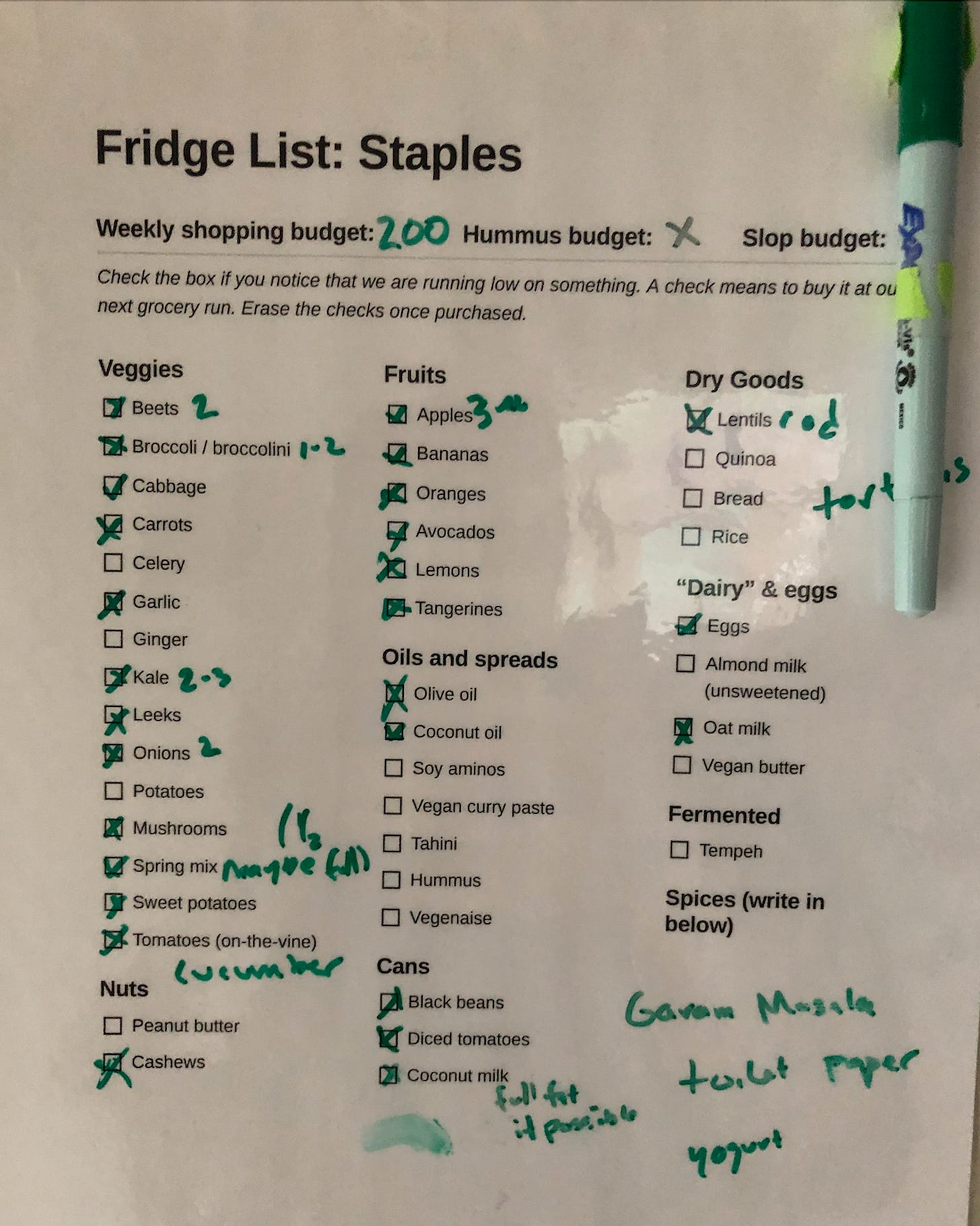Reducing Food Waste in Community: The Wall of Leftovers & The Fridge List
A 5-person community’s approach to combatting food waste
This is a guest post from Eli Sullivan, from her experience living at Tabor House, a 5-person house in Portland, OR. We could publish a whole series about the ins and outs of food sharing (and still might!) but we like Eli's tips here for their blend of effectiveness and easiness.
The Challenge
Our fridge was overflowing with leftovers. Sometimes we had way too much kale and sometimes we had none. During big fridge clean outs we’d open our containers and produce drawers only (and sadly) to find lots of once-delicious food smelling funky or growing mold. This was sad and wasteful.
Why?
We didn’t know what leftovers were available: We couldn’t see what was inside of our tupperwares without opening them. This seems small, but it made a difference. Also, there were often available leftovers that any number of us didn’t know to go looking for.
Low food waste awareness: Only a couple of us consistently did the fridge clean-outs. The others weren’t as aware of or impacted by the food waste.
Taking inventory before grocery shopping took a long time: sometimes it didn’t happen, so the grocery shopper didn’t know what we had and what we needed.
Experiments & Results
We wanted solutions that were low-effort, inexpensive, and somehow delightful. Enter: the Wall of Leftovers & Fridge List.
Experiment #1: The Wall of Leftovers
How it works:
Any time you put leftovers in a container, attach a sticky note to the container with what is inside and the current date.
Whoever eventually empties the container adds the sticky note to the appropriate side of the Wall of Leftovers (”ate it all up!” or “composted some”).
The Wall of Leftovers: how it started
The Wall of Leftovers: How it went
The Wall of Leftovers: Results
Overall, this system worked great. Our food waste decreased, it became easier to navigate the fridge and containers, and we all had more awareness towards reducing waste. Specifically:
Having the sticky notes on the containers made it easy to quickly know what was inside. Knowing the date also made it more appealing to dig right in, rather than cautiously smelling it first. It also made it easier to identify and consume food that might go bad soon.
The Wall of Leftovers is public and lasting; we felt compelled (and had fun finding ways) to avoid adding sticky notes to the “composted some” side when we could. For example, we made fried rice out of dried out rice instead of tossing it out as we had before. In addition, I delighted in having this visual representation of all of the meals we’d eaten (many shared) and observe our cooking/eating habits over time.
By studying what went on the “composted some” side, we learned what kinds of foods we most often composted. With that information, we made small adjustments to what and how much we cooked.
Experiment #2: The Fridge List
While the Wall of Leftovers addressed the leftovers component, the Fridge List addressed the inventory component.
As a group, we developed a list of foods that we wanted to regularly have in the kitchen. We then laminated it and hung it up in a visible place in the kitchen. Whenever anyone noticed that something was running low, they just marked it off with a dry erase marker. Then, when it came time for shopping, the shopper had an inventory/shopping list ready to go. After shopping they just wiped it clean.
The Fridge List: Results
It reduced over-buying and consequently, food waste, and also made us all happier because the kitchen was more reliably well-stocked, but not over-stocked. It also gave everyone a space to write special requests, which reduced the instances of lost “hey can you get garlic powder and chocolate chips??” text messages. People would sometimes forget to mark things off, so I would often do a quick inventory double-check, but the list definitely improved and shared the responsibility of the process.
Conclusion
As someone who loves both community living and finding creative solutions to reduce food waste, both of these experiments were delightful; I would recommend them (or variations that work for your house) to other communities!
Thanks Eli for the guest post! In addition, Eli would love to connect with anyone else passionate about reducing food waste - feel free to email her at eliana.sullivan23@gmail.com.







